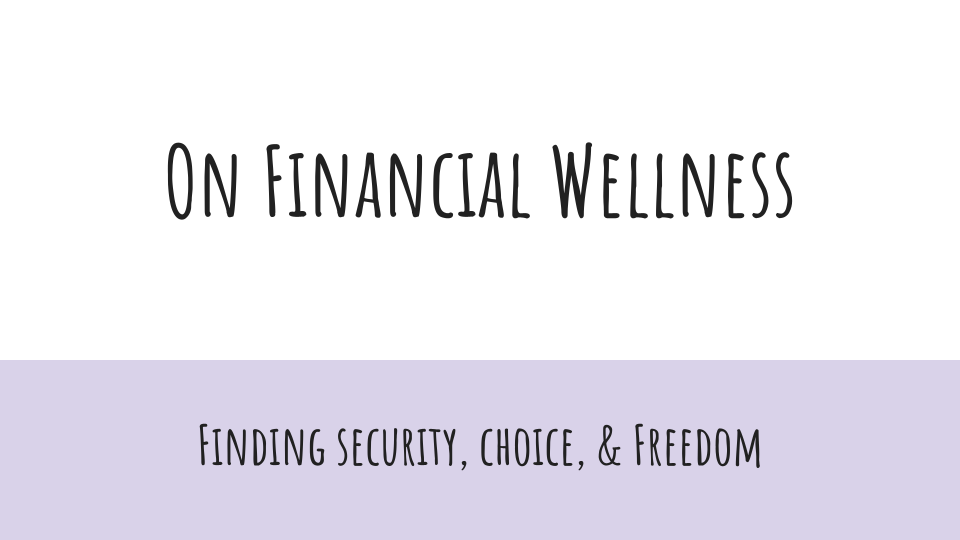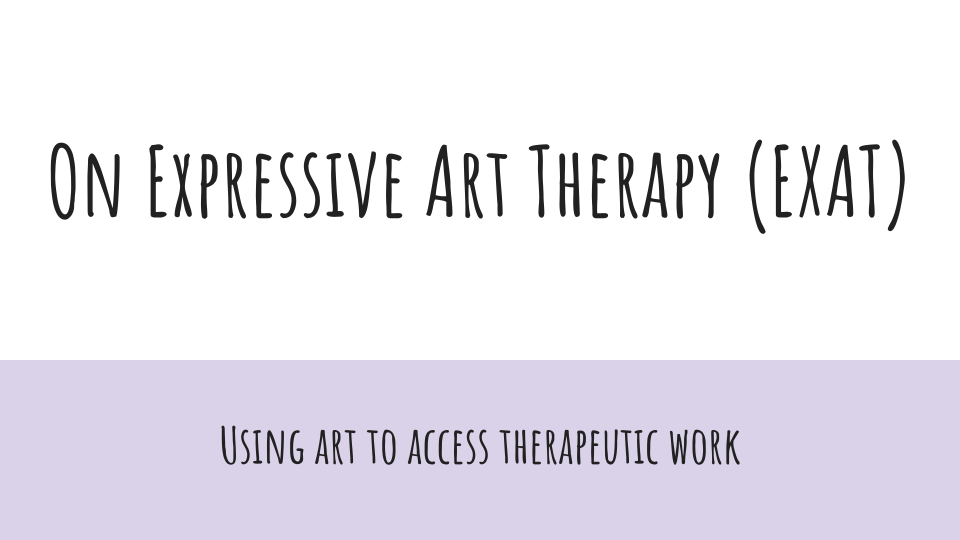On Financial Wellness
Financial Wellness is feeling in control of your money and your life, as well as fostering a feeling of financial freedom of choice. When we are ‘financially well,’ we are able to make decisions that are not exclusive to monetary consequences. In this chapter we will discuss ways to foster a sense of financial wellness and have conversations with your partner and family, who may have different definitions of financial security.
Below you will find resources related to Financial Wellness.
More about Financial Wellness
Financial Wellness is feeling in control of your money and your life. It is not only having financial security, but it is also having the financial freedom of choice. When you are financially stable, you have the opportunity to explore other areas of your life that bring you happiness and self-care.
Start off by asking yourself this: What does financial wellness mean to me? Everyone has their own definition of financial wellness, and you are allowed to have yours too. Maybe your partner has a different definition of financial wellness, and that has led to some friction in your relationship!
Within the question of ‘What does financial wellness mean to me?’, see if you can break it down further:
What does financial security mean to me? What does it look like to be financially secure?
How does a financially well person spend their money? How does a financially well person save?
What are my budgeting goals, and what are my saving goals?
What are my 5, 10, and 20 year financial goals?
Are my spending and saving patterns in alignment with these goals? If no, what can I shift to become more in alignment?
What social and educational supports do I have that can help me further understand what financial wellness means to me?
Financial Wellness & Communication
Money is a touchy subject no matter who you are talking to. Most families struggle to talk about money in an open and comfortable way, and discussing your salary with friends or co-workers can be considered rude or taboo.
Having these conversations with your partner can be extremely challenging, and lead to frustration. When navigating conversations about financial wellness with your partner:
Return to the Communication module of this classroom
Revisit the Values module as well, because frequently there are mismatches in financial values between partners.
Check to see what biases you each may feel around money.
Ask what your definitions of ‘financial security’ and ‘financial wellness’ are
Remember to approach these conversations with a sense of curiosity. You want to know more about the other partner so you can better support them, and also work towards these financial goals together. You are on the same team.
Financial Wellness Suggested Activities
Take time this week to consider the following activities related to exploring Financial Wellness. There are several different options for you to explore in case one modality works better for you. Please note that your Conversation Prompts can also make great Journal Topics.
Journal Topics
First, answer the following questions from the article:
What does financial wellness mean to me?
What does financial security mean to me? What does it look like to be financially secure?
Is there a difference between ‘financially well,’ and ‘financially secure?’
How does a financially well person spend their money? How does a financially well person save?
What are my budgeting goals, and what are my saving goals?
What are my 5, 10, and 20 year financial goals?
Are my spending and saving patterns in alignment with these goals? If no, what can I shift to become more in alignment?
What social and educational supports do I have that can help me further understand what financial wellness means to me?
Which of my values are connected to my financial wellness? How do these show up when I consider my financial landscape? How do I know when I have been spending/saving either in or out of alignment with my values?
Where does my understanding of financial well-being come from?
What did conversations about money look like in my family-of-origin? How was money treated in my family growing up?
What happens for me (1) emotionally, (2) intellectually, and (3) in my body when people begin talking about money?
In the past, how have I talked about money? How would I like to talk about money moving forward with my partner? With my family? Friends? At work?
Conversation Prompts
With your partner, family member, or trusted friend, share your definition of financial wellness. See what similarities and differences are present in your definitions. Think about ways these differences may create friction as you make financial decisions together. Consider how your values may be influencing your conceptualization of financial wellness. Approach this conversation with curiosity.
Have a conversation about your biases around money. Examine how these biases may influence how you use your money in a relationship.
Experiential & Artistic Activities
Spend time creating two large circles - it may be easiest to use drawing or painting as your mediums here. On your first circle, make a pie chart that represents your current spending / saving habits. Notice what comes up for you as you draw it out. Use different colors to represent the slices you feel really happy about versus the slices you feel more frustrated or sad about. Then on the other circle make your ‘ideal’ spending/saving circle. Again, pay attention to your body’s cues as you create. Once complete, compare the two circles and see what’s possible in your life to shift towards this second financial representation.
Create art in whatever form as you answer the question: Where does financial health fit into my life? Then, journal about the experience of creating this piece.
Additional Resources on Financial Wellness
Documents/Books on Social Wellness
Videos on Social Wellness
Did you enjoy this chapter? Share the Classroom with your community!
Other Chapters in WELLNESS
Check out the Rest of the Classroom!
References
Buffington, B., Neale, S. (2018, March 23). Getting financially fit. American Nurse. Retrieved January 7, 2022, from https://www.myamericannurse.com/getting-financially-fit/
Eifert, G.H, & Forsyth, J.P. (2005). Acceptance and Commitment Therapy for Anxiety Disorders : A Practitioner’s Treatment Guide to Using Mindfulness, Acceptance, and Values-Based Behavior Change Strategies. New Harbinger Publications.
Migliaccio, J. N. (2020). Financial Wellness Enters the Mainstream. Journal of Financial Service Professionals, 74(6), 18–23.
Tact, Tone And Timing: The Power Of Apology. (2013). National Public Radio.
















